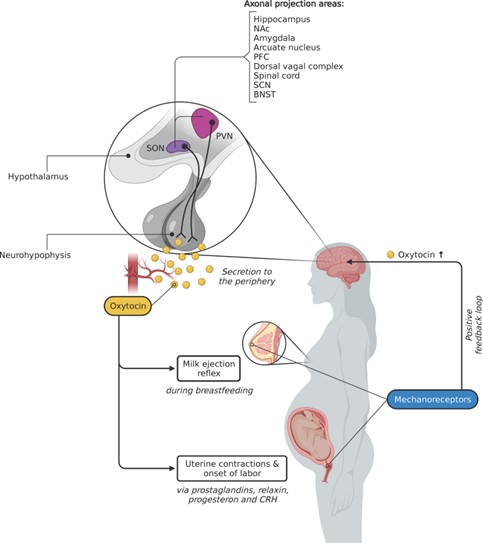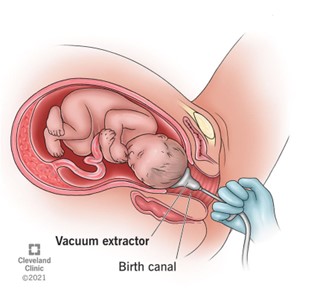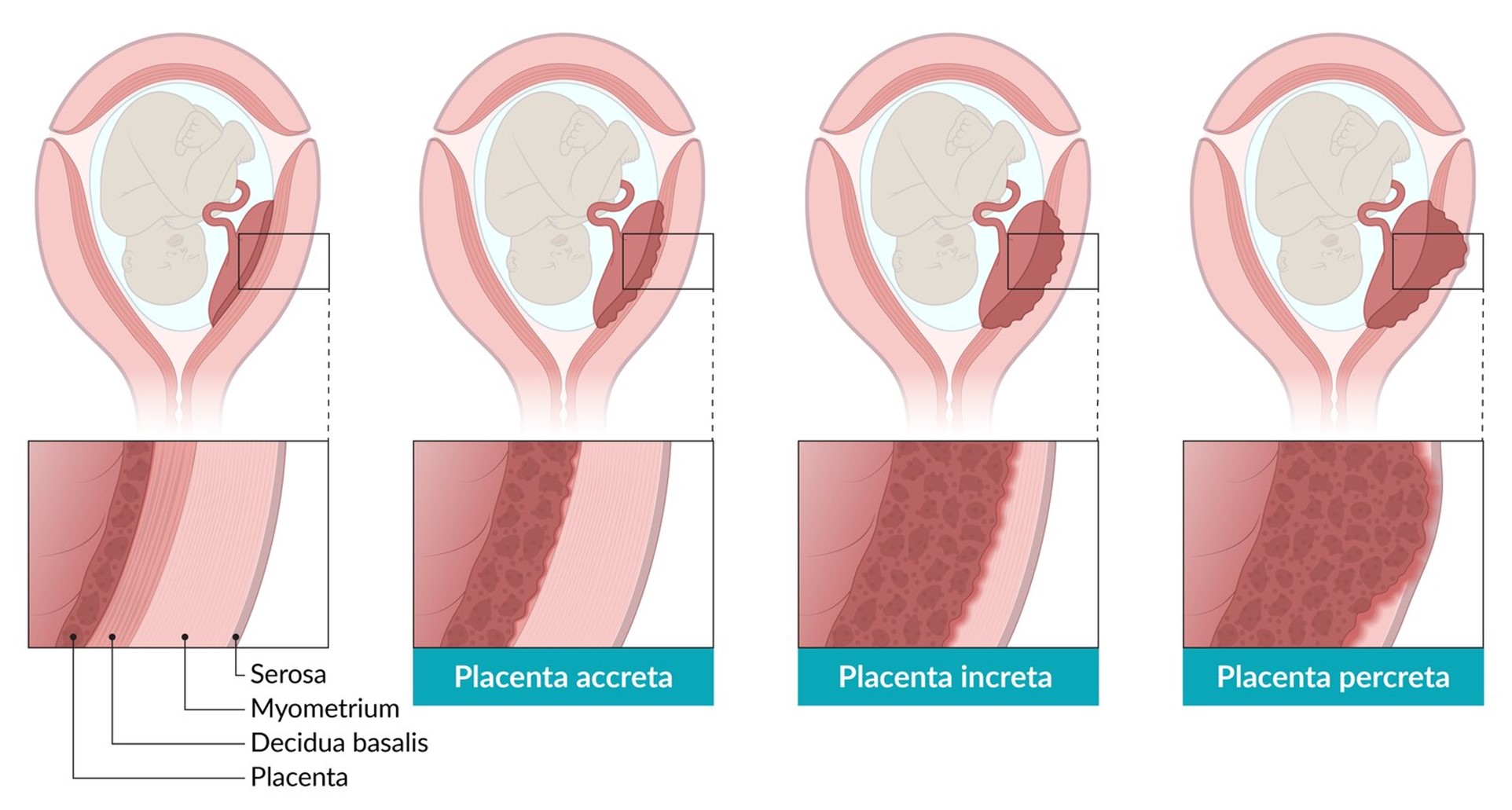Postpartum Hemorrhage > Maternal & Newborn
Exam Review
Introduction
Total Questions : 6
Showing 6 questions, Sign in for moreA nurse is caring for a client who had a vaginal delivery 4 hours ago.
The nurse notes that the client’s fundus is boggy, deviated to the right, and above the umbilicus.
The client’s perineal pad is saturated with blood.
What is the most likely cause of this client’s postpartum hemorrhage?
Explanation
This is when the uterus does not contract enough to stop the bleeding from the placental site after delivery.It is the most common cause of postpartum hemorrhage.A boggy, deviated and above the umbilicus fundus indicates uterine atony.
Choice B. Retained placenta is wrong because it occurs when some or all of the placenta remains in the uterus after delivery.It can also cause postpartum hemorrhage, but it usually presents with a firm fundus and a continuous trickle of blood.
Choice C. Uterine inversion is wrong because it is a rare condition where the uterus turns inside out after delivery.It can also cause postpartum hemorrhage, but it usually presents with severe pain, shock and a palpable mass at the introitus.
Choice D. Cervical laceration is wrong because it is a tear in the cervix that can occur during delivery.It can also cause postpartum hemorrhage, but it usually presents with a firm fundus and bright red bleeding that does not respond to uterine massage.
A nurse is administering oxytocin to a client who had a cesarean delivery and has uterine atony.
What is the primary purpose of this medication in this situation?
Explanation
Oxytocin is a hormone that causes the uterine muscles to contract and compress the blood vessels that connect the uterus to the placenta.This helps prevent excessive bleeding after delivery, especially in cases of uterine atony, which is the failure of the uterus to contract sufficiently.
Choice B is wrong because oxytocin does not have any direct effect on infection or wound healing.
Choice C is wrong because oxytocin does not enhance milk production, although it does facilitate milk ejection during breastfeeding.Choice D is wrong because oxytocin does not relieve pain or discomfort from uterine cramping, but rather causes it by stimulating contractions.

A nurse is assessing a client who had a prolonged labor and vacuum-assisted birth.
The nurse observes a large, tense, bluish bulge on the client’s perineum.
The client reports severe pain in the area.
What is the most likely diagnosis for this client?
Explanation
Perineal hematoma.A perineal hematoma is a collection of blood in the soft tissues of the perineum that can result from trauma during delivery, such as vacuum-assisted birth.The client may present with a large, tense, bluish bulge on the perineum and severe pain in the area.
Choice B. Vulvar varicosity is wrong because it is a condition where the veins in the vulva become enlarged and swollen due to increased blood flow and pressure during pregnancy.It usually appears as bluish or purple veins on the vulva and may cause discomfort, itching, or heaviness in the area.
It is not related to vacuum-assisted birth or prolonged labor.
Choice C. Rectocele is wrong because it is a condition where the rectum bulges into the vagina due to weakening of the pelvic floor muscles and connective tissue.
It may cause symptoms such as difficulty with bowel movements, a feeling of pressure or fullness in the vagina, or sexual dysfunction.
It is not related to vacuum-assisted birth or prolonged labor.
Choice D. Episiotomy is wrong because it is a surgical incision made in the perineum to enlarge the vaginal opening during delivery.
It may be done to facilitate delivery, prevent severe tearing, or protect the baby’s head from trauma.
It is not a diagnosis but a procedure that may be performed during vacuum-assisted birth or normal vaginal delivery.
A nurse is reviewing the laboratory results of a client who had a postpartum hemorrhage due to placenta accreta.
The nurse notes that the client’s platelet count is 80,000/mm3, fibrinogen level is 150 mg/dL, and prothrombin time is 18 seconds.
What is the most appropriate interpretation of these findings?
Explanation
The client has severe coagulation impairment.
This is because the client’s platelet count, fibrinogen level, and prothrombin time are all significantly abnormal compared to the normal ranges.
• The normal platelet count is 150,000 to 450,000/mm3.
A platelet count of 80,000/mm3 indicates thrombocytopenia, which is a low number of platelets that can impair clotting and cause bleeding.
• The normal fibrinogen level is 200 to 400 mg/dL.
A fibrinogen level of 150 mg/dL indicates hypofibrinogenemia, which is a low level of fibrinogen that can impair clotting and cause bleeding.
• The normal prothrombin time is 11 to 13.5 seconds.
A prothrombin time of 18 seconds indicates a prolonged clotting time that can impair clotting and cause bleeding.
Choice A is wrong because the client does not have normal coagulation parameters.
All three tests are abnormal and indicate a severe coagulation impairment.
Choice B is wrong because the client does not have mild coagulation impairment.
The degree of abnormality in the test results is too high to be considered mild.
Choice C is wrong because the client does not have moderate coagulation impairment.
The degree of abnormality in the test results is too high to be considered moderate.

A nurse is preparing to discharge a client who had a postpartum hemorrhage due to uterine atony.
Which of the following instructions should the nurse include in the teaching? (Select all that apply)
Explanation
These are the instructions that the nurse should include in the teaching for a client who had a postpartum hemorrhage due to uterine atony.
• Choice A is correct because foul-smelling lochia or fever can indicate an infection of the uterus or other reproductive organs, which can worsen bleeding and cause complications.
• Choice B is correct because iron intake and supplements can help replenish the blood loss and prevent anemia.
• Choice C is correct because sexual intercourse can cause trauma to the healing tissues and increase the risk of infection and bleeding.The lochia usually stops within four to six weeks after delivery.
• Choice D is wrong because limiting fluid intake can cause dehydration and impair blood circulation and clotting.The client should drink plenty of fluids to stay hydrated and promote healing.
• Choice E is correct because pelvic floor exercises can help strengthen the muscles that support the uterus and bladder, and prevent prolapse and urinary incontinence.
Uterine atony is a condition where the uterus does not contract enough after delivery, which can lead to excessive bleeding or postpartum hemorrhage.It is the most common cause of postpartum hemorrhage, accounting for up to 80% of cases.It can be caused by several factors, such as multiple pregnancy, large baby, prolonged or rapid labor, obesity, uterine fibroids, or medications that affect uterine contractions.It requires immediate medical treatment to stop the bleeding and prevent shock and organ failure.
A nurse is caring for a client who has experienced postpartum hemorrhage due to uterine atony.
Which of the following medications should the nurse anticipate administering?
Explanation
Oxytocin is the most effective medication for preventing and treating postpartum hemorrhage caused by uterine atony, which is the failure of the uterus to contract after delivery.Oxytocin stimulates uterine contractions and reduces bleeding.
Choice A is wrong because methylergonovine maleate (Methergine) is a second-line uterotonic drug that can cause hypertension and should not be used in women with high blood pressure.
Choice B is wrong because magnesium sulfate (MgSO4) is used to prevent seizures in women with preeclampsia or eclampsia, not to treat postpartum hemorrhage.
Choice D is wrong because carboprost tromethamine (Hemabate) is another second-line uterotonic drug that can cause severe diarrhea and bronchospasm and should not be used in women with asthma.
Sign Up or Login to view all the 6 Questions on this Exam
Join over 100,000+ nursing students using Nursingprepexams’s science-backend flashcards, practice tests and expert solutions to improve their grades and reach their goals.
Sign Up Now

